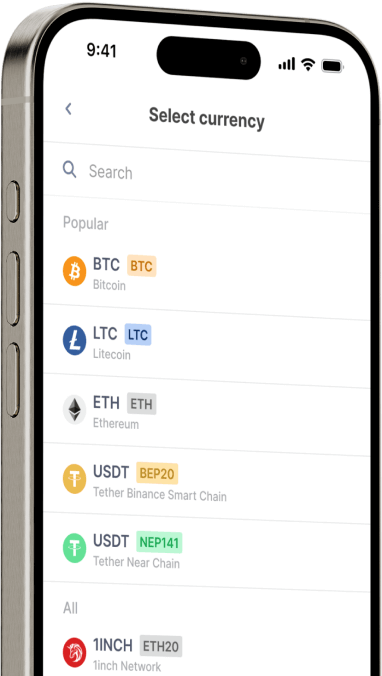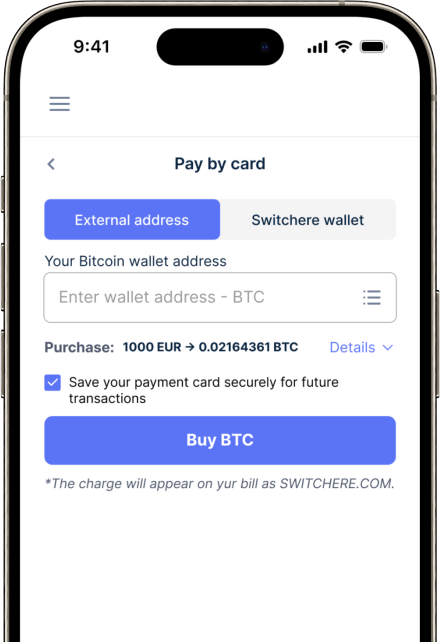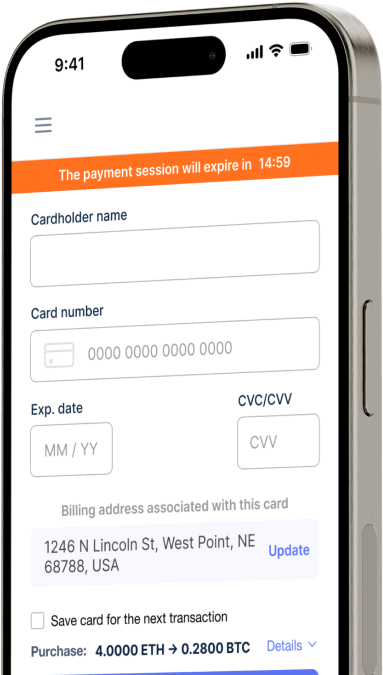Konwertuj
Dominican Peso (DOP) na Bitcoin SV (BSV) natychmiast
Kupuj Bitcoin SV (BSV) z Dominican Peso (DOP) łatwo w Switchere i korzystaj z szybkich, bezpiecznych transakcji.
O
Bitcoin SV (BSV)
Bitcoin SV (BSV), skrót od Satoshi Vision, to cyfrowy zasób, który powstał w wyniku kontrowersyjnego hard forka blockchaina Bitcoin Cash (BCH). Jego fundamentalną misją jest przywrócenie tego, co jego zwolennicy uważają za oryginalny protokół Bitcoina, szczegółowo opisany w białej księdze Satoshiego Nakamoto. Główna filozofia projektu koncentruje się na masowym skalowaniu w łańcuchu (on-chain), głównie poprzez usunięcie limitu rozmiaru bloku, co pozwala na nieograniczoną pojemność bloku. To techniczne podejście ma na celu ułatwienie dużej liczby transakcji przy ekstremalnie niskich opłatach, umożliwiając praktyczne mikropłatności i operacje na danych na dużą skalę bezpośrednio w cyfrowym rejestrze.
Działając w oparciu o mechanizm konsensusu Proof-of-Work (PoW), sieć BSV wykorzystuje ugruntowany model Niewydanych Wyjść Transakcyjnych (UTXO) dla swojego bezpieczeństwa kryptograficznego. Poza funkcją jako system gotówki elektronicznej peer-to-peer, BSV jest zaprojektowany jako globalny nośnik danych. Natywny token BSV jest używany nie tylko do opłat transakcyjnych, ale także do zapisywania danych w blockchainie, zasilając złożone aplikacje i inteligentne kontrakty za pomocą swojego solidnego języka skryptowego. Doprowadziło to do rozwoju „Metanetu”, koncepcji internetu działającego w łańcuchu. BSV pozycjonuje się jako fundamentalna warstwa dla infrastruktury Web3 na poziomie przedsiębiorstw, dążąc do zapewnienia jednego, stabilnego i skalowalnego publicznego blockchaina do globalnego użytku.
Kup ponad 150 innych kryptowalut za Dominican Peso (DOP)
Inne monety za Dominican Peso (DOP)
-
DOP do ZRX
-
DOP do 1INCH
-
DOP do AAVE
-
DOP do ACH
-
DOP do ALGO
-
DOP do TLM
-
DOP do ANKR
-
DOP do APE
-
DOP do NFT
-
DOP do API3
-
DOP do APT
-
DOP do ARPA
-
DOP do AUDIO
-
DOP do AVAX
-
DOP do AVAX
-
DOP do AXS
-
DOP do BADGER
-
DOP do BAL
-
DOP do BNT
-
DOP do BAT
-
DOP do BNB
-
DOP do BSW
-
DOP do BSV
-
DOP do BLUR
-
DOP do BONE
-
DOP do CTSI
-
DOP do CELR
-
DOP do CELO
-
DOP do CEL
-
DOP do LINK
-
DOP do CHZ
-
DOP do CHR
-
DOP do C98
-
DOP do COMP
-
DOP do CFX
-
DOP do PEOPLE
-
DOP do CVX
-
DOP do ATOM
-
DOP do CTC
-
DOP do CRV
-
DOP do DAI
-
DOP do DASH
-
DOP do MANA
-
DOP do DENT
-
DOP do DGB
-
DOP do DYDX
-
DOP do XEC
-
DOP do EOS
-
DOP do ETC
-
DOP do ENS
-
DOP do ETHW
-
DOP do FET
-
DOP do FIL
-
DOP do FLOKI
-
DOP do GALA
-
DOP do GNO
-
DOP do ONE
-
DOP do HBAR
-
DOP do HOT
-
DOP do HOOK
-
DOP do ICX
-
DOP do ILV
-
DOP do IMX
-
DOP do INJ
-
DOP do ICP
-
DOP do IOST
-
DOP do IOTX
-
DOP do JASMY
-
DOP do JST
-
DOP do KAVA
-
DOP do KCS
-
DOP do KSM
-
DOP do KNC
-
DOP do LDO
-
DOP do LQTY
-
DOP do LPT
-
DOP do LOOKS
-
DOP do LRC
-
DOP do LUNA
-
DOP do MKR
-
DOP do MASK
-
DOP do EGLD
-
DOP do ALICE
-
DOP do NEAR
-
DOP do XEM
-
DOP do NEXO
-
DOP do NOT
-
DOP do NMR
-
DOP do OKB
-
DOP do OMG
-
DOP do ONT
-
DOP do EDU
-
DOP do OP
-
DOP do OGN
-
DOP do CAKE
-
DOP do PAXG
-
DOP do PENDLE
-
DOP do DOT
-
DOP do POL
-
DOP do QTUM
-
DOP do QNT
-
DOP do RDNT
-
DOP do XRD
-
DOP do RVN
-
DOP do REN
-
DOP do RSR
-
DOP do RLC
-
DOP do RPL
-
DOP do SFP
-
DOP do SHIB
-
DOP do SKL
-
DOP do SXP
-
DOP do STND
-
DOP do STG
-
DOP do XLM
-
DOP do GMT
-
DOP do STORJ
-
DOP do STMX
-
DOP do SUSHI
-
DOP do SNX
-
DOP do USDT (Polygon)
-
DOP do USDT (AVAC)
-
DOP do USDT (BEP20)
-
DOP do USDT (ERC20)
-
DOP do USDT (SPL)
-
DOP do USDT (NEP141)
-
DOP do USDT (FA2)
-
DOP do USDT (TRC20)
-
DOP do USDT (JETTON)
-
DOP do XTZ
-
DOP do GRT
-
DOP do SAND
-
DOP do TFUEL
-
DOP do THETA
-
DOP do RUNE
-
DOP do TON
-
DOP do TUSD (BEP20)
-
DOP do TUSD (TRC20)
-
DOP do TWT
-
DOP do UOS
-
DOP do UMA
-
DOP do UNI
-
DOP do USDC (Polygon)
-
DOP do USDC (SPL)
-
DOP do USDC (OP)
-
DOP do USDC (BEP20)
-
DOP do USDC (AVAC)
-
DOP do USDC (ARB)
-
DOP do USDC (ERC20)
-
DOP do VET
-
DOP do VRA
-
DOP do WAXP
-
DOP do WOO
-
DOP do WLD
-
DOP do WBTC
-
DOP do WMINIMA
-
DOP do XDC
-
DOP do YFI
-
DOP do YGG
-
DOP do ZIL
Jak kupić Bitcoin SV (BSV)
Często zadawane pytania
-
Co na rynku aktywów cyfrowych reprezentuje para handlowa DOP/BSV?
Para DOP/BSV reprezentuje kurs wymiany między peso dominikańskim (DOP), walutą fiducjarną, a Bitcoin SV (BSV), aktywem cyfrowym. Działa jako brama fiat, umożliwiając zakup BSV za pomocą peso dominikańskich. Ta para ma kluczowe znaczenie dla użytkowników w Republice Dominikańskiej, którzy chcą bezpośrednio inwestować w ekosystem Bitcoin SV, skupiający się na masowym skalowaniu w łańcuchu zgodnie z oryginalnym protokołem Satoshi Vision.
-
Jakie cechy techniczne Bitcoin SV wyróżniają go przy podejmowaniu decyzji o zakupie?
Głównym wyróżnikiem Bitcoin SV jest jego zaangażowanie w nieograniczony rozmiar bloku. To techniczne podejście ma na celu ułatwienie masowego wolumenu transakcji w łańcuchu, umożliwiając funkcje takie jak tanie mikropłatności i przechowywanie danych w łańcuchu za pośrednictwem protokołu Metanet. W przeciwieństwie do sieci opierających się na rozwiązaniach warstwy 2, filozofią BSV jest skalowanie warstwy podstawowej, co jest kluczowym czynnikiem dla osób zainteresowanych aplikacjami wymagającymi wysokiej przepustowości i trwałych zapisów danych na blockchainie Proof-of-Work.
-
Jak bezpiecznie przechowywać moje Bitcoin SV (BSV) po zakupie?
Po nabyciu BSV kluczowe jest przeniesienie go z giełdy do bezpiecznego portfela cyfrowego, w którym kontrolujesz klucze prywatne. Dla maksymalnego bezpieczeństwa zalecany jest portfel sprzętowy, ponieważ przechowuje on klucze w trybie offline. W przypadku mniejszych kwot lub częstego użytku, realną opcją jest niepowierniczy portfel programowy kompatybilny z blockchainem BSV. Nigdy nie udostępniaj swojej frazy seed ani kluczy prywatnych i zawsze włączaj uwierzytelnianie dwuskładnikowe (2FA) na wszystkich powiązanych kontach.
-
Jakie są powszechne metody zakupu Bitcoin SV (BSV) za peso dominikańskie (DOP)?
Bezpośrednie pary DOP/BSV są rzadkością na głównych giełdach kryptowalut. Zazwyczaj proces obejmuje dwa kroki: 1) Użyj lokalnego dominikańskiego przelewu bankowego lub karty kredytowej, aby kupić główną kryptowalutę, taką jak Bitcoin (BTC) lub stablecoin (USDT), na platformie akceptującej DOP. 2) Przenieś te aktywa na giełdę o wysokiej płynności BSV i wymień je na Bitcoin SV. Platformy peer-to-peer (P2P) mogą również oferować bezpośrednie transakcje, ale wymagają starannej weryfikacji kontrahentów.
-
Jakiej zgodności z KYC/AML powinienem się spodziewać, używając DOP do zakupu BSV?
Korzystając z scentralizowanej giełdy kryptowalut lub bramki fiat do konwersji DOP, musisz przejść weryfikację Know Your Customer (KYC) i Anti-Money Laundering (AML). Zazwyczaj obejmuje to przesłanie dokumentu tożsamości wydanego przez rząd (np. dominikańskiej Cédula), dowodu adresu, a czasem selfie do weryfikacji biometrycznej. Te procedury regulacyjne są standardem dla każdej platformy łączącej tradycyjny system finansowy z aktywami cyfrowymi w celu zapobiegania nielegalnym działaniom.
-
Jaka jest strategiczna przewaga nabycia BSV w porównaniu z innymi monetami typu Proof-of-Work?
Główną strategiczną zaletą, na którą powołują się zwolennicy Bitcoin SV, jest skupienie się na użyteczności poprzez nieograniczone skalowanie. Dążąc do bloków o rozmiarze terabajtów, sieć BSV jest zaprojektowana do obsługi globalnej skali transakcji i aplikacji danych bezpośrednio na swoim blockchainie warstwy 1. To czyni ją potencjalnie atrakcyjną для firm i deweloperów, którzy wymagają stabilnego środowiska o niskich opłatach do złożonych operacji w łańcuchu, takich jak tokenizacja, inteligentne kontrakty i budowanie aplikacji na Metanet, co odróżnia ją od monet PoW bardziej skoncentrowanych na byciu środkiem przechowywania wartości.




